Chapter 3. test
Introduction
Reading Visuals: Context
© 2018 Macmillan Learning
Context: Define
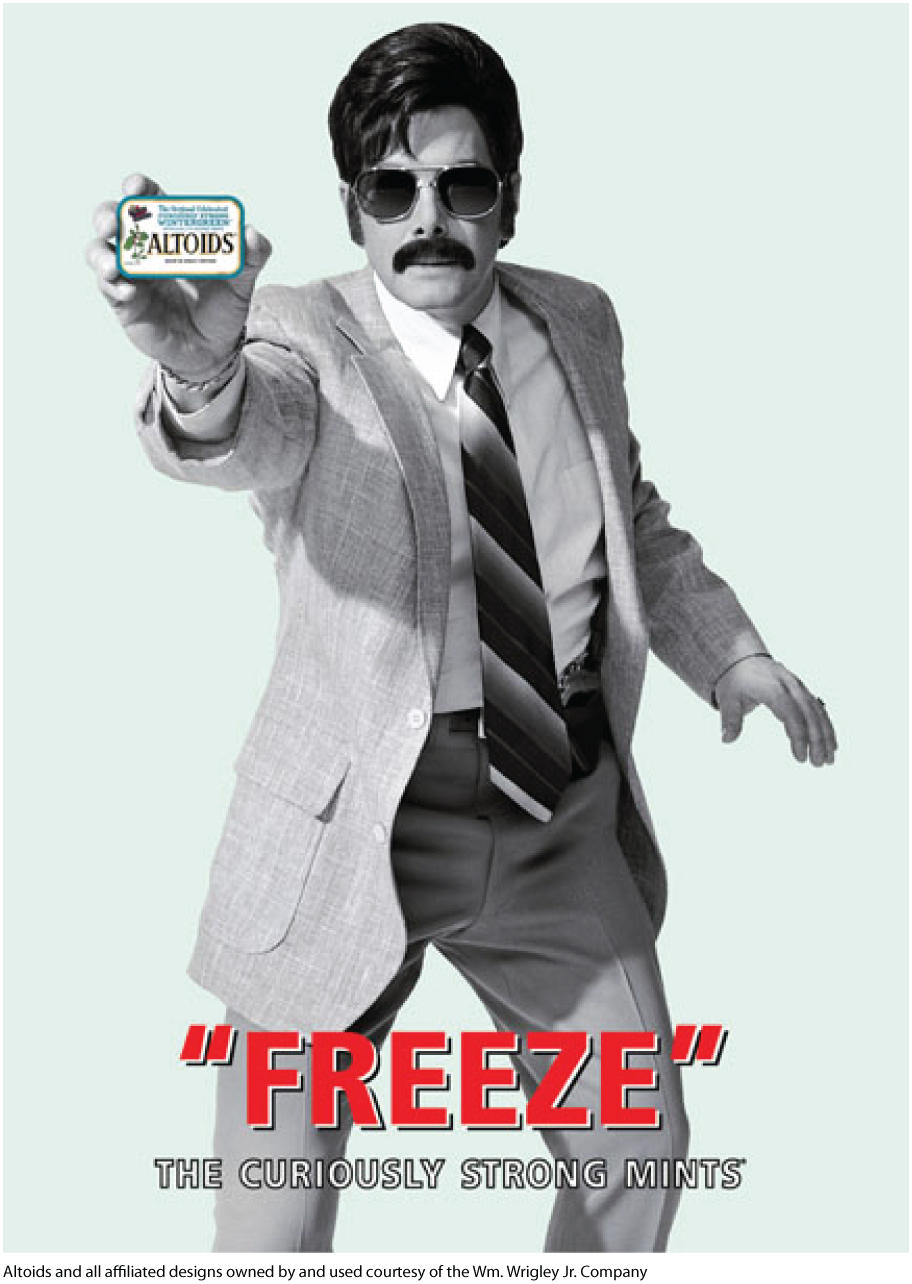
Context: Define
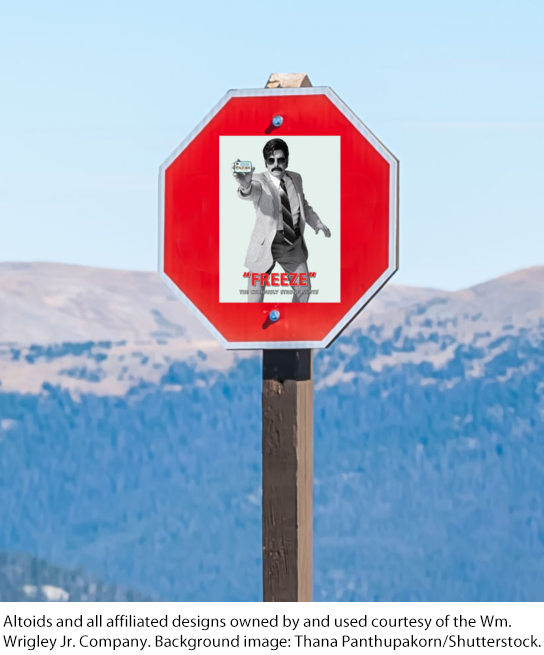
Where a picture is seen—for example, in the pages of People magazine, in the Wall Street Journal, on the wall of an art gallery, or on the wall of a bus station—is part of its context, and helps us puzzle out its purpose.
Context: Define
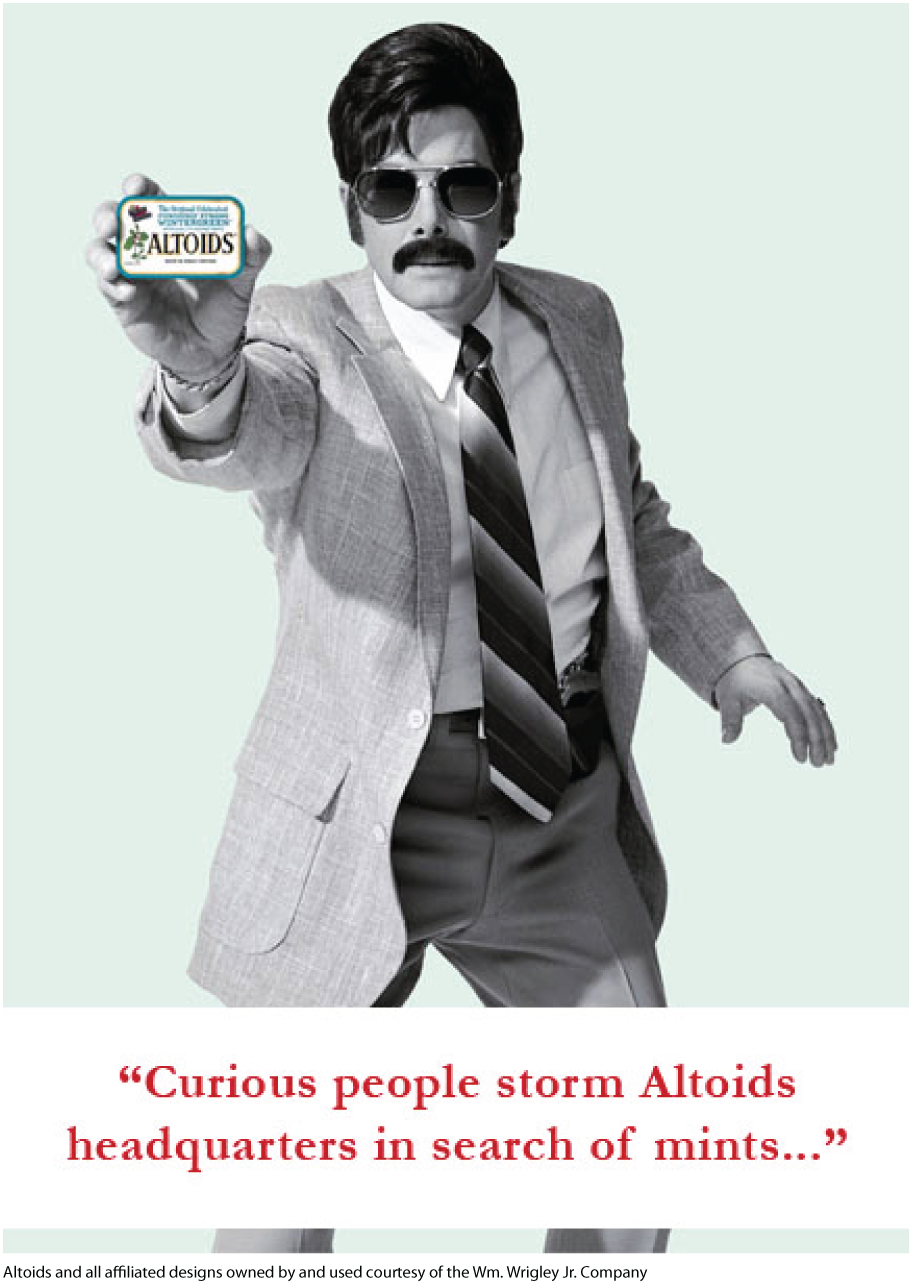
What surrounds the picture—captions, headlines, images, or nothing at all—is also an important part of its context.
Context: Define
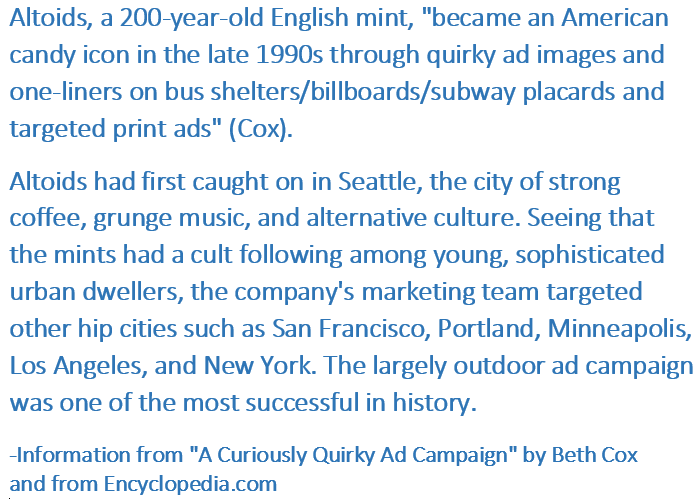
Knowing more about how the text came to be—in this case, the history of the ad campaign—is also part of its context.
Context: Define
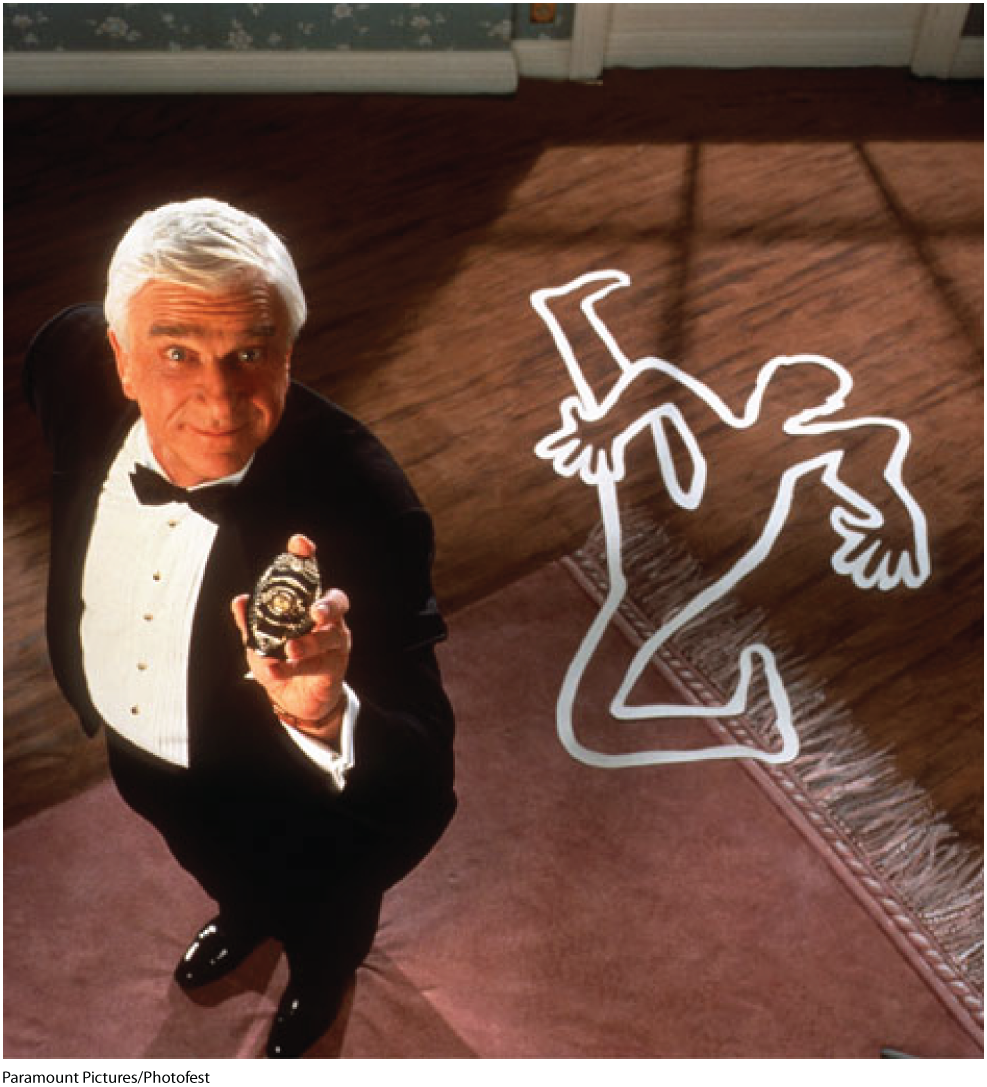
The Altoids ad relies on some shared knowledge, or cultural context, from its audience. We recognize the convention of the detective flashing his badge as Leslie Nielsen does in this still from The Naked Gun 2½—in the Altoids ad, the badge becomes a mint tin. We also read the Altoids ad in the context of parody, part of the current trend to make fun of cheesy 70s detectives.
Context: Analyze
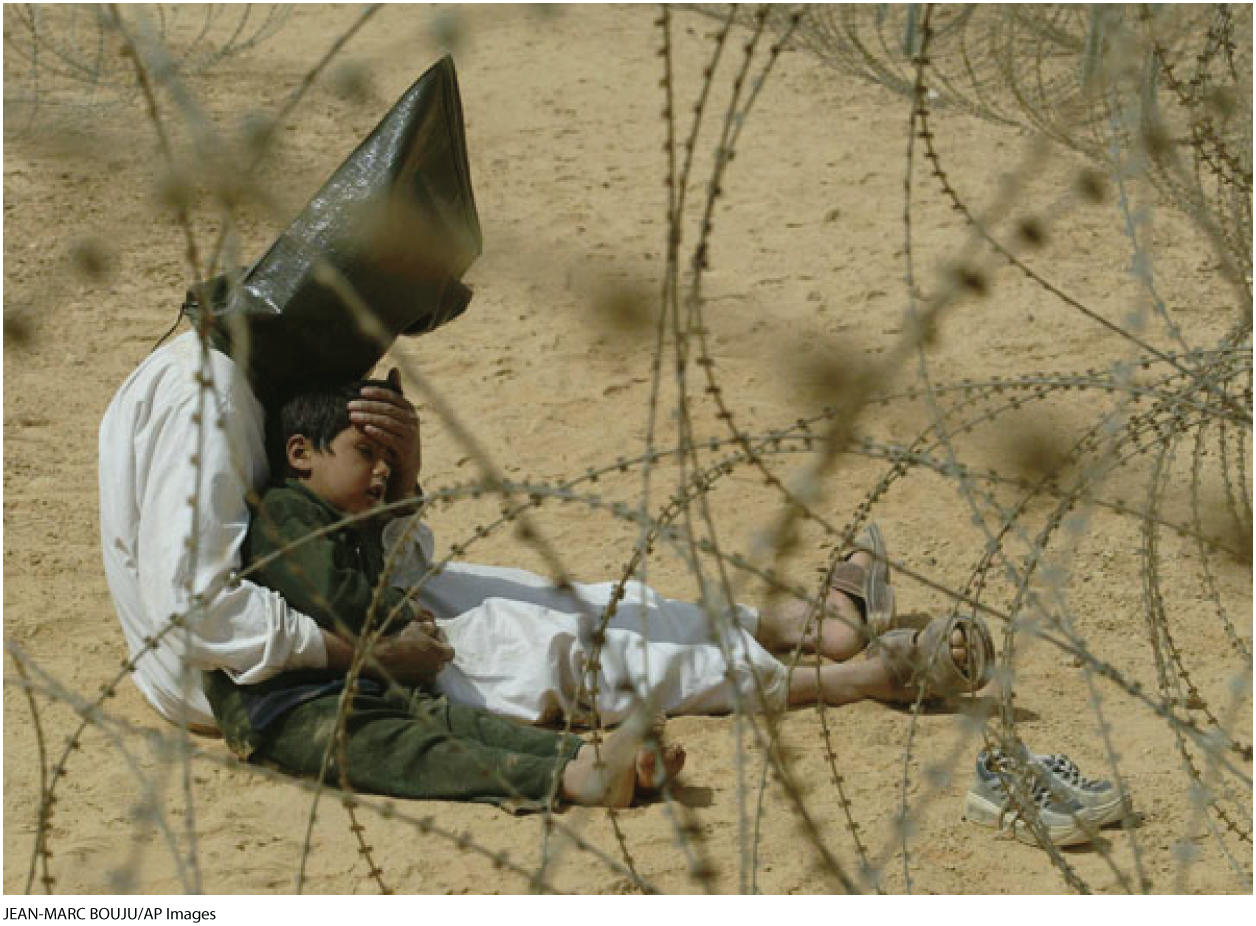
Captions can sometimes be seen as “transparent” context—we tend to think that the words that run with an image explain, truthfully, what the picture is showing. But we need to analyze context as carefully as we look at what’s going on in the visual text itself. Without any accompanying information, this photograph shows a man with a bag over his head, holding a child close behind a concertina-wire fence. We might assume, because of the wire, that they are being held prisoner, but we need a caption for context.
Now, let’s look at two different captions that ran with this same image on two different news sites—the American MSNBC and the British BBC—in April 2003, during the U.S. war with Iraq.
Context: Analyze
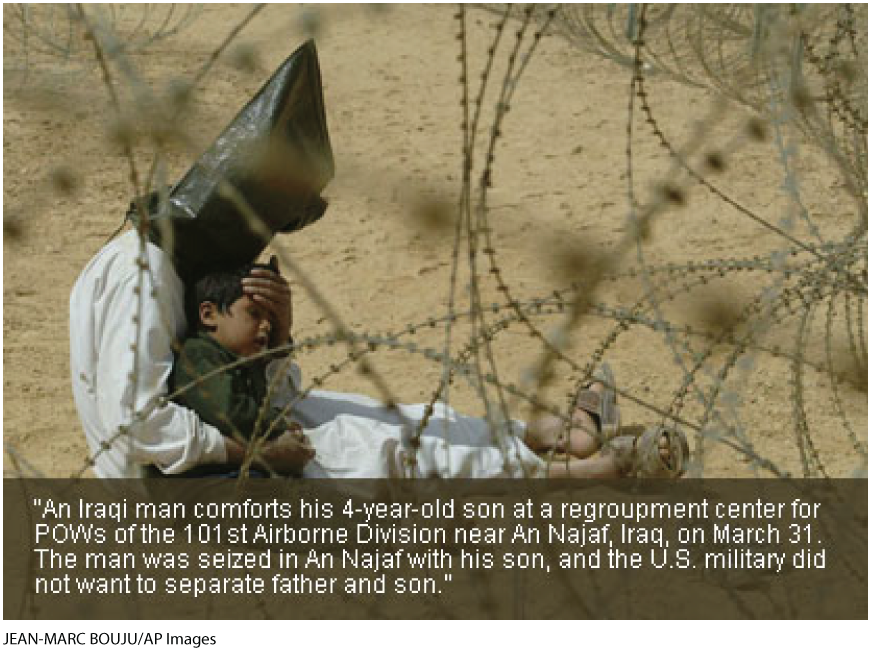
This caption reassures us: The man is comforting his son; he’s at a “regroupment center” (not a prison camp); the U.S. military is treating this family with consideration and kindness.
An Iraqi man comforts his 4-year-old son at a regroupment center for POWs of the 101st Airborne Division near An Najaf, Iraq, on March 31. The man was seized in An Najaf with his son, and the U.S. military did not want to separate father and son.
Context: Analyze
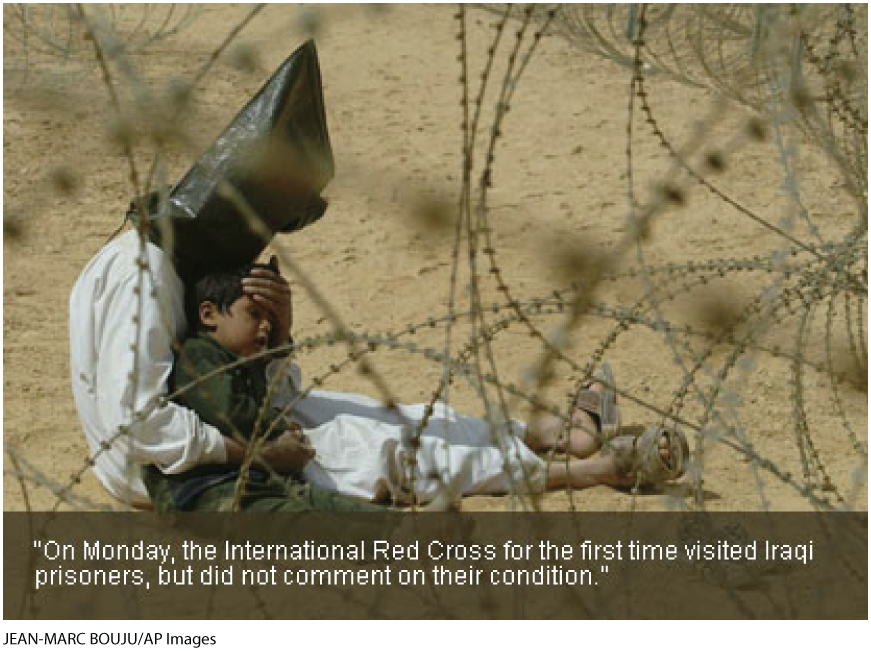
This caption leaves much open to the imagination, and we may imagine that the child is in dire need of assistance. We may feel concerned about how American troops are treating Iraqi prisoners.
On Monday, the International Red Cross for the first time visited Iraqi prisoners, but did not comment on their condition.
Context: Analyze
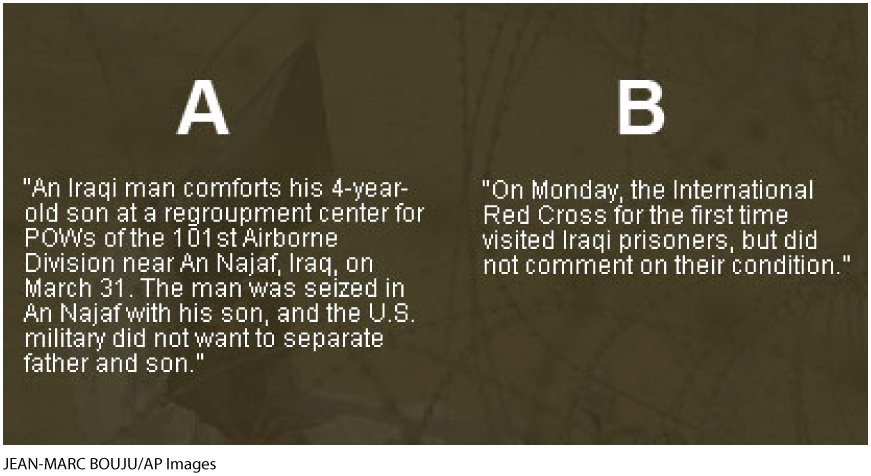
Why might these two organizations have given the same image such different contexts? MSNBC is an American news source, for an American audience. The BBC is a British news source for a world audience. Both captions might be completely accurate—but context is more than a caption, as this example shows.
Context: Respond
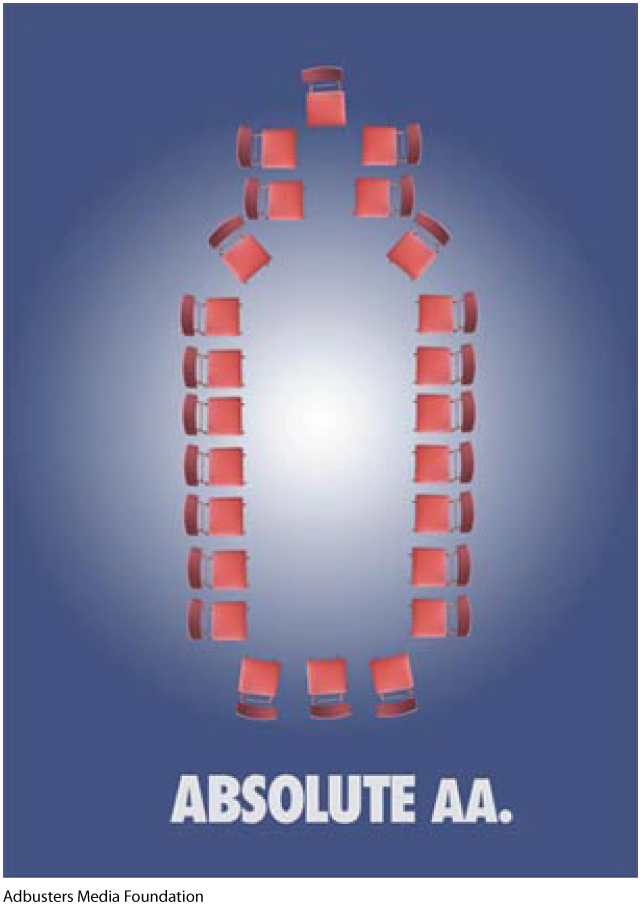
Here is a parody of the Absolut ad campaign put together by Adbusters. To read it critically, you have to recognize layers of context: for Absolut, for A.A., and for Adbusters. Essentially the same question follows four times, each time with another layer of context that adds to your reading of the ad.
Context: Respond

Use the space below to answer the following questions.
Context: Respond
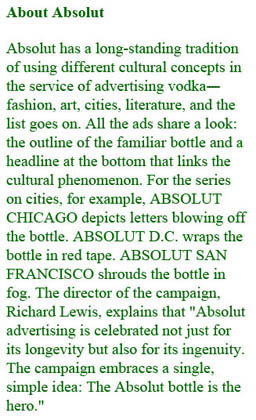
Use the space below to answer the following questions.
Context: Respond
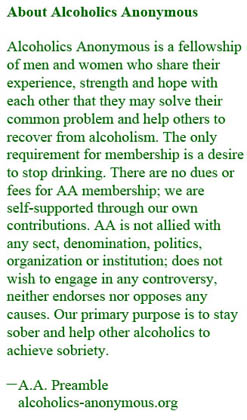
Use the space below to answer the following questions.
Context: Respond
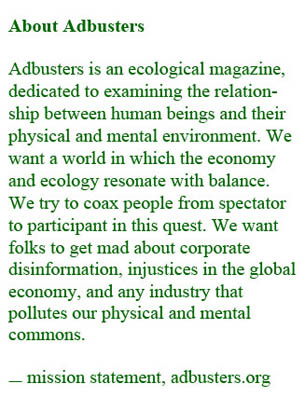
Use the space below to answer the following questions.
Context: Respond

Use the space below to answer the following questions.